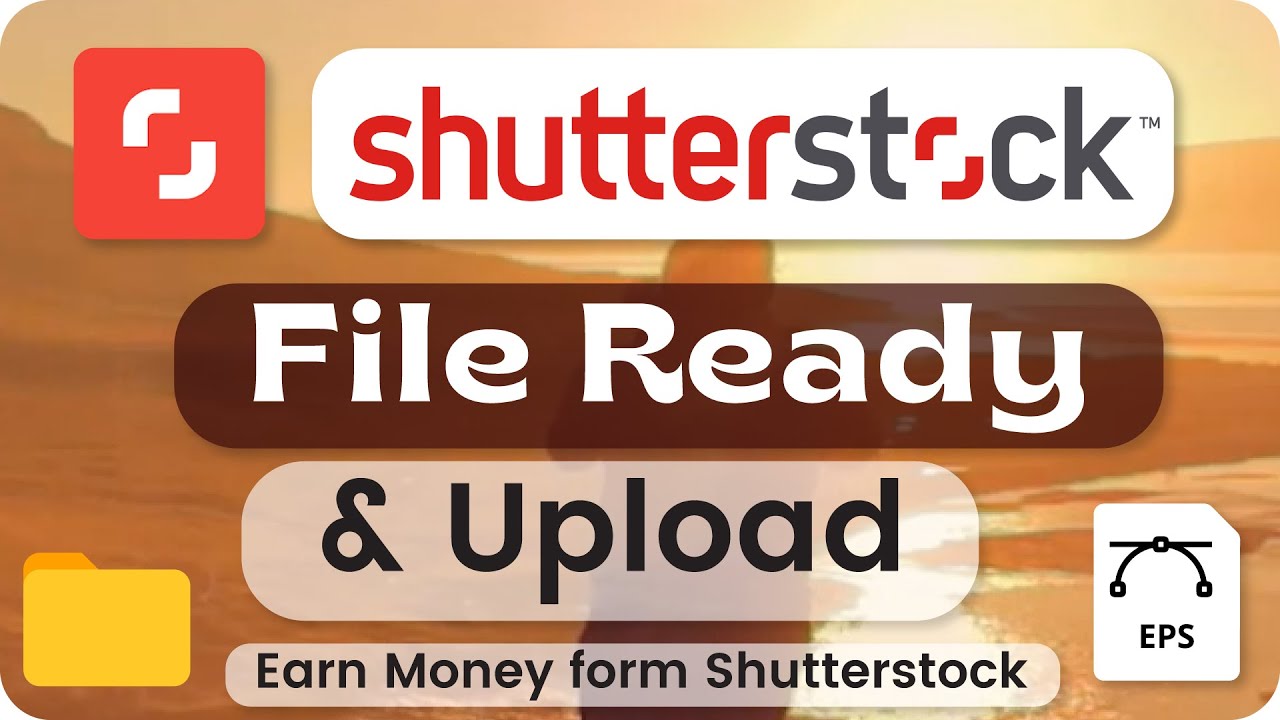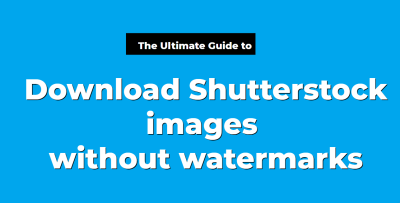If you want your content to stand out on Shutterstock, it’s crucial to understand who your audience is and how the platform works. Shutterstock isn’t just a marketplace; it’s a vibrant community of buyers looking for high-quality visuals, videos, and music to enhance their projects. The platform attracts a diverse crowd—from advertisers and web designers to filmmakers and bloggers. Recognizing what they seek can help you tailor your uploads effectively.
Shutterstock‘s audience tends to favor content that’s not only visually appealing but also versatile and relevant to current trends. Whether it’s a stunning landscape shot, a compelling infographic, or a catchy music track, your content needs to resonate with the needs of buyers. Additionally, understanding Shutterstock‘s search algorithm can give you insights into how to improve your content’s visibility. Keywords, tags, and categories play a big role in how your work gets discovered. The more you understand what buyers are searching for, the better you can position your content to meet those demands.
Moreover, browsing the platform regularly to see trending content can help you identify popular themes, styles, and formats. This insight enables you to create or select content that aligns with current market demands. Remember, Shutterstock‘s platform is dynamic, with trends shifting rapidly—what’s hot today might change tomorrow. Staying engaged with the community, reading Shutterstock’s contributor resources, and observing industry trends will keep you ahead of the game and increase your chances of making successful sales.
Preparing and Optimizing Your Content for Uploads
Now that you understand your audience and how the platform operates, the next step is to prepare your content meticulously. High-quality, well-optimized content is key to increasing downloads. Start by ensuring your visuals are sharp, properly lit, and free of distractions. For photos, shoot in high resolution, and for videos, aim for good framing and clarity. Music tracks should be well-produced, with balanced audio and no background noise.
Before uploading, take the time to tag and categorize your content thoughtfully. Use relevant keywords that accurately describe your work—think about what buyers might search for. Be specific but also include broader terms to maximize discoverability. For example, if you upload a photo of a sunset over mountains, include tags like “sunset,” “mountains,” “nature,” “evening,” “scenery,” and any trending themes.
Creating compelling titles and descriptions is equally important. Your title should be clear and descriptive, while your description can provide context or highlight unique aspects of your content. Avoid keyword stuffing—aim for natural, informative copy that appeals to both search algorithms and human buyers.
For visual content, consider editing or enhancing your images with tools like Adobe Photoshop or Lightroom to improve color balance, sharpness, and overall aesthetic. For videos, trim any unnecessary footage, correct color grading, and add subtitles or captions if necessary. Music tracks should be properly formatted, with clear, high-quality audio files in the accepted formats.
Lastly, adhere to Shutterstock‘s technical requirements for file formats, size, and resolution. Uploadting compliant files not only prevents rejections but also ensures your content appears professional and appealing. Taking the time to prepare and optimize your content will significantly boost its chances of being discovered, downloaded, and appreciated by buyers.
Creating Eye-Catching and High-Quality Visuals
When it comes to standing out on Shutterstock, the quality and appeal of your visuals are everything. Think of your images, vectors, or videos as the first impression you make on potential buyers. If they’re eye-catching, professional, and relevant, you’re more likely to get downloads. So, how do you create visuals that catch the eye and boost your chances of success?
First, focus on high resolution and clarity. Blurry, pixelated images won’t do you any favors. Use good equipment or editing tools to ensure your visuals are crisp and clear. Remember, buyers want content that looks professional and polished.
Next, consider composition and color. Play with balance, contrast, and harmony to create visuals that are visually appealing. Bright, vibrant colors tend to attract more attention, but also keep in mind the mood and message you want to convey. Subtle, elegant tones work well for more sophisticated themes.
Another crucial aspect is originality. Avoid overused stock themes and strive to bring fresh perspectives or unique angles to your visuals. Think about current trends, but also add your own creative spin to make your content stand out from the crowd.
Don’t forget about relevance. Make sure your visuals match the needs of your target audience and are aligned with popular categories on Shutterstock. For example, if you notice a rise in demand for environmentally friendly themes, consider creating visuals around sustainability and nature.
Lastly, invest in editing and post-production. Use editing software to enhance colors, crop images perfectly, and remove distractions. Small adjustments can make a huge difference in the final look of your visuals. Remember, the goal is to create content that looks professional, fresh, and compelling.
In summary, creating eye-catching visuals isn’t just about snapping a photo—it’s about crafting high-quality, relevant, and visually appealing content that speaks to your audience. When your visuals shine, more people will be drawn to download and use your work.
Writing Effective Titles and Descriptions for Your Content
Once you have stunning visuals ready, the next step is making sure they get noticed through compelling titles and descriptions. Think of these as the storefront signage of your content—if they’re clear, engaging, and optimized, more people will click and download.
Start with clear and descriptive titles. Your title should succinctly convey what the content is about. Avoid vague or generic titles like “Beautiful Image.” Instead, be specific: “Colorful Sunset Over Mountain Range” or “Modern Office Workspace with Natural Light.” This helps buyers quickly understand the value of your work.
Use keywords strategically in your titles and descriptions. Think about what your target audience might search for. If you’re uploading a photo of a vegan breakfast, include keywords like “vegan,” “healthy,” “breakfast,” or “plant-based.” Incorporate these naturally to improve your content’s visibility in search results.
Next, craft detailed descriptions that expand on the title. Explain the context, mood, and potential uses of your visuals. For example, “This high-resolution image captures a vibrant vegan breakfast bowl, perfect for health blogs, nutrition websites, or food advertising.” The more details you provide, the easier it is for buyers to see how they can use your content.
Here are some tips for writing effective descriptions:
- Be specific: Mention colors, setting, and subjects.
- Include relevant keywords: Improve searchability.
- Highlight potential uses: Advertising, websites, social media, presentations, etc.
- Keep it natural: Write in a conversational tone; avoid keyword stuffing.
Finally, remember to keep your titles and descriptions consistent, professional, and free of typos. A well-crafted title and description can significantly improve your content’s visibility and appeal, leading to more downloads and wider exposure for your work.
Utilizing Relevant Keywords and Tags to Improve Visibility
When it comes to getting your content noticed on Shutterstock, keywords and tags are your best friends. Think of them as the bridge that connects your work with the right audience searching for specific visuals. If your keywords are spot-on and relevant, your images and videos are much more likely to show up in search results, leading to more downloads and exposure.
Start by putting yourself in the shoes of a buyer. What would they type into the search bar if they’re looking for something similar to your content? Be specific, but also consider broader terms that capture the essence of your work. For example, if you’ve uploaded a beautiful sunset landscape, instead of just “sunset,” use tags like “sunset,” “landscape,” “nature,” “scenery,” “evening sky,” “mountains,” and any other descriptive words that accurately describe your image.
Here are some tips to optimize your keywords and tags:
- Be Specific: Use detailed descriptors to target niche searches.
- Use Synonyms: Different buyers might search with different terms, so include variations.
- Avoid Overstuffing: Only include relevant tags; irrelevant tags can hurt your ranking.
- Research Trends: Check out trending keywords on Shutterstock or industry blogs to stay updated.
- Update Regularly: As trends evolve, revisit your tags and update them for better visibility.
Remember, keywords and tags aren’t just about stuffing as many as possible. Quality and relevance are key. Take the time to choose thoughtful, precise tags, and your content will be more discoverable by those who are genuinely interested in what you’ve created.
Promoting Your Shutterstock Portfolio on Social Media and Other Channels
Once your content is uploaded and optimized with the right keywords, it’s time to spread the word! Promoting your Shutterstock portfolio on social media and other channels is a fantastic way to increase visibility and drive more downloads. Think of it as creating a buzz around your work — the more people see it, the higher the chances they’ll want to use and purchase your content.
Here are some effective strategies to promote your portfolio:
- Share on Social Media Platforms: Use platforms like Instagram, Facebook, Twitter, LinkedIn, and Pinterest to showcase your best work. Create engaging posts with eye-catching images and include links to your Shutterstock profile or specific images.
- Use Hashtags Wisely: Incorporate relevant hashtags like StockPhotography, VisualContent, PhotographyTips to reach a wider audience interested in visual content.
- Join Niche Communities: Participate in online forums, Facebook groups, or Reddit communities related to photography, design, or your specific niche. Share your work and offer insights — people love connecting with genuine creators.
- Create a Personal Website or Blog: Showcase your portfolio on your own site, write blog posts about your creative process, and embed your Shutterstock images. This not only drives traffic but also builds your personal brand.
- Leverage Email Marketing: Build an email list of fans or potential clients and send regular updates featuring your latest uploads and promotions.
Remember, consistency is key. Keep sharing new content, engaging with your audience, and demonstrating your expertise. Over time, this will help build a loyal community that regularly checks out your work, leading to more downloads and sales on Shutterstock.
By combining strategic keyword use with active promotion across channels, you’re setting yourself up for greater visibility and success. So, get out there, share your creativity, and watch your downloads grow!
Engaging with the Shutterstock Contributor Community
One of the most overlooked but powerful ways to boost your content downloads is by actively engaging with the Shutterstock contributor community. Think of it as building your own little network of fellow creators who are just as passionate about their craft as you are. When you participate in the community, you not only learn new tips and tricks but also increase your visibility among other contributors and Shutterstock staff.
So, how can you get involved? Here are some simple but effective ways:
- Join Forums and Groups: Shutterstock has dedicated forums and social media groups where contributors share experiences, ask questions, and give advice. Participating regularly can help you stay updated on platform changes and trending topics.
- Attend Webinars and Workshops: Shutterstock often hosts webinars and online workshops. These are excellent opportunities to learn from experts, ask questions, and showcase your enthusiasm for the platform.
- Provide Constructive Feedback: If you notice issues or have suggestions for platform improvements, share them politely. Contributor feedback is valuable and can influence future features or policies, making your voice heard.
- Support Fellow Creators: Engage with other contributors’ work by commenting positively or sharing their content on social media. Building genuine relationships can lead to collaborations or mutual promotion, which can, in turn, increase your visibility.
Remember, community engagement isn’t just about self-promotion; it’s about building relationships and sharing knowledge. When you become an active, positive member of the community, people are more likely to notice your work, recommend it, or even collaborate with you. Over time, this increased visibility can translate into more downloads and better sales.
Monitoring Your Performance and Adjusting Your Strategy
The world of digital content is always changing, and what works today might not work tomorrow. That’s why it’s essential to keep a close eye on your performance metrics and be ready to adapt your strategy accordingly. Think of it as steering a boat—you need to constantly check your navigation and adjust your course to reach your destination successfully.
So, what should you monitor? Here are some key performance indicators (KPIs) to keep an eye on:
| Performance Metric | Description |
|---|---|
| Download Numbers | Tracks how many times your content has been downloaded. Spot trends—are downloads increasing for certain types of images or topics? |
| Sales Revenue | Measures your earnings from downloads. If certain content is generating more income, consider creating similar pieces. |
| Search Terms & Tags | Analyzes what keywords are driving traffic to your content. Use this info to optimize your tags and titles. |
| Top Performing Content | Identify which images, vectors, or videos are your best-sellers. Focus on creating more similar content. |
| Contributor Stats & Feedback | Monitor your profile views, favorites, and comments to gauge engagement and reputation. |
Once you have this data, you can start making informed decisions. For example, if you notice that your landscape photos are outperforming your abstract designs, you might want to focus more on landscape photography. Or, if certain keywords aren’t bringing in traffic, tweak your tags to better align with what buyers are searching for.
Regularly reviewing your performance allows you to spot opportunities and identify areas for improvement. Don’t be afraid to experiment—try different styles, formats, or keywords—and then see what the data tells you. Over time, this iterative process will help you refine your content and strategies, ultimately leading to more downloads and increased success on Shutterstock.



